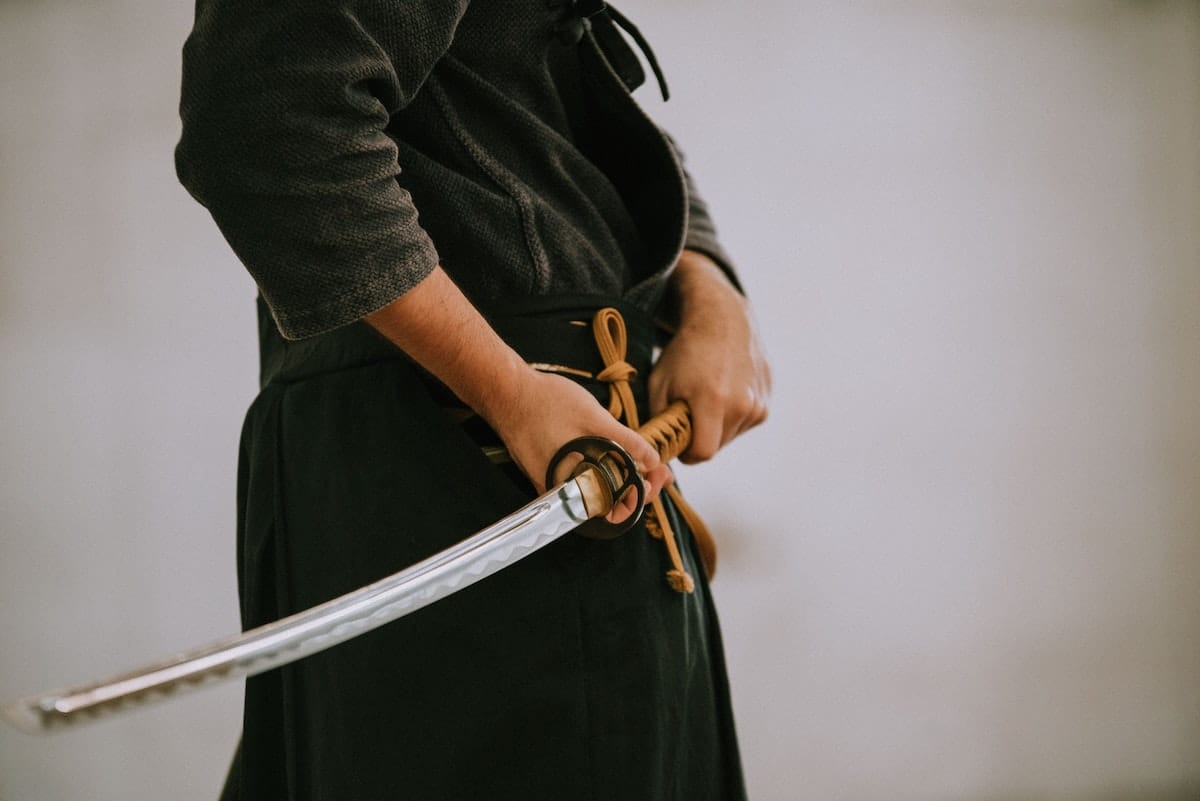Table of Contents
Have you ever wondered why Samurai swords are so popular? Do you wish to know how these traditional samurai swords were used? If your answer to these questions is yes, then you have found yourself coming to the right article.
Here, we will be talking all about the three weapons the Samurai used and how they differ from each other. So without any further delay let’s dive right into it.
Overview
Between 700 and 900 AD, during the period of Nara in Japanese history, there was a change from having an imperial army made up of conscripted soldiers to depending more on specialized troops made up of men who made war their profession.
These were the original samurai, employed by the royal court as mercenary troops. Samurai formed into clans over time, acting as the local soldiers for the Japanese empire. Samurai took over the imperial court and formed the Shogunate authority, a government centered on the rule of a Shogun, the high general, between 1192 and 1467, during the Kamakura period.
Many people out there do not know this, but Bows and spears, used by samurai and regular troops, respectively, were the primary military equipment during the period. However, the samurai began to use spear-like lances as well throughout the fourteenth century. The samurai used long swords, called katana, while practically everyone else used small swords, called wakizashi, and knives, called tanto.
Popularity of katana
Now you may be asking; how did the popularity and recognition of Katana swords come about? Well, it is important to keep in mind that The katana is renowned across the world for striking a rare balance between beauty and lethal effectiveness.
Their handles and sheaths are frequently wrapped and lacquered with lovely patterns, and their sharp, flexible blades may be employed as both stabbing and slashing weapons.
Samurai in Japan used incredibly flexible armor that was comprised of tiny scales. To facilitate storage and transit, they could be easily folded and collapsed. Additionally, they were easily repairable after being harmed.
This was particularly of great advantage in wars when swords needed to be replaced or fixed in a short period. Besides their great kill, they are also regarded as some of the most exquisite and vibrant armors in existence.
They had incredibly detailed designs, and artists frequently contributed to their creation by adding lacquer and creating various braiding patterns which enhanced its overall look.
The greatness of tanto swords
Now that you know the popularity of Katana swords, let us take a look at the second most common type of weapon used by samurai. The Cold Steel or certain historic Japanese weapons are what make the Tanto blade renowned. It possesses a variety of sword traits. Frequently used to divide, pierce, or charge others.
It was designed with both a single edge and a double edge. Below you will find some useful details regarding the blade and its components that will help you understand how to use a Japanese tanto knife best:
- A modest, conventional sword that can be used by any gender
- Used for assaulting and chopping, etc.
- Has a highly effective blade that is sharp enough to cut and break through hard surfaces such as a hard stone
You may be surprised to find out that this knife is used by women for self-defense. They typically shield themselves by concealing this knife in their obi. The usage of it in Japanese martial arts is extensive and considered to be of great value and respect in the Japanese heritage.
The Japanese Tanto knife is a lethal combat tool. Compared to the katana, it offers far superior advantages. Besides that, Kaiken knives are also carried by women as it is also a type of tanto sword.
Strength of bows and arrows (origin)
The third and last type of weapon used by samurai soldiers in Japanese history is known as Origin. Now you may think that bows and arrows are not as strong and effective as swords, but in reality, that is not the case.
In contrast to western society, bowing, or origin is a crucial aspect of Japanese culture that is taught from an early age to soldiers or people who wanted to prepare for war and combat. It must be mentioned that a typical bow can take the form of a little head nod or a significant waist bend, depending on the circumstance.
A modest nod is often less formal, while a deep, extended bow conveys respect. In the culture of Japan, bowing may be used to express a variety of feelings, including gratitude, regret, respect, and admiration. Kneeling which is also known as zari and standing bows are the two main variations of bowing.
You must bear in mind that for both of these movements, you should only bend at the waist and maintain a straight back. This is how ancient soldiers in Japan used to show respect for the power of bows and arrows. Although the origin may look like it does not pose any harm, however when it is posed and aimed at a right angle to an opponent, it can kill the person instantaneously.
The takeaway
Although there are many other types of weapons used by Samurai soldiers, the ones we listed above were the most popular and common ones.


